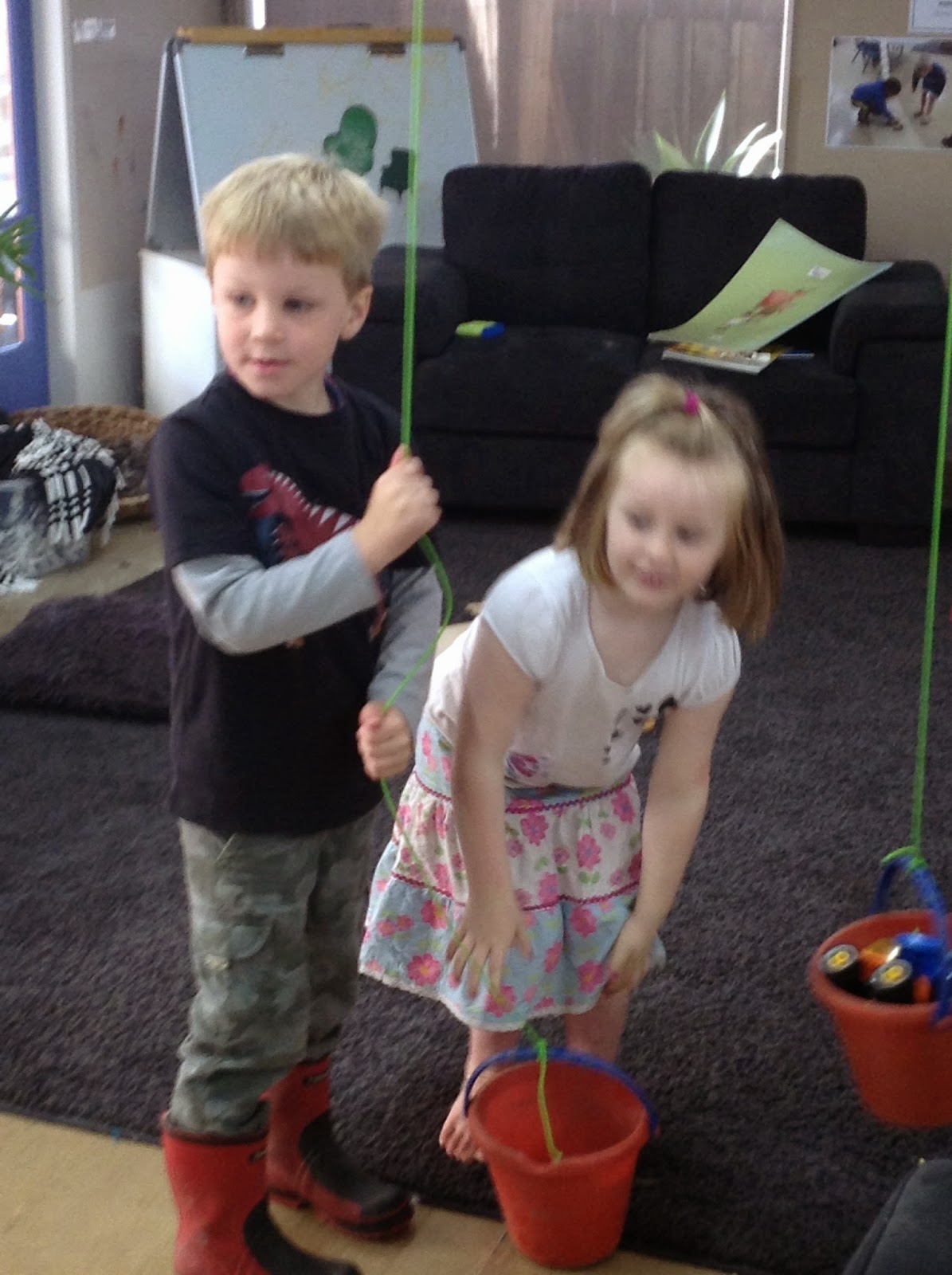Cordahl was playing with the window blind. Watching the roller end as he pulled on the cord to make the blind roll up. Then pulling on the opposite cord to watch the blind roll down. Over and over, up and down, again and again.

I could tell by the look on Cordahl's face, the way his eyes lit up, that this was fascinating stuff for him. The way that he repeated the action spoke of his need to work it all out.
Cordahl is such a joy to watch in action...he is a real tutu fingers...he wants to know, he wants to understand and he's hands on and in there. We describe this as a disposition of curiosity and this is important in terms of learning.
Carr describes dispositions as patterns of learning: patterns of behaviour, thinking and interaction. Dispositions describe the child as a learner and supports children's own thinking to see themselves as "someone who...tries new things...keeps going when it gets hard...knows when to stop and ask...learns from making mistakes" etc.
Introducing pulley systems as a provocation to foster curiosity...
 The allure of buckets hanging on pulley's from the rafters within the kindergarten were a temptation too irresistible for the children to pass by.
The allure of buckets hanging on pulley's from the rafters within the kindergarten were a temptation too irresistible for the children to pass by.  |
| Max is in a state of awe! |
 |

This play and learning experience both excited and challenged children's thinking. With encouragement they
showed persistence with a difficult task as they trialled ways to be successful with the challenge at hand. They gained considerable satisfaction from their efforts too!
Trying alternative strategies and pushing the boundaries of thinking...it is possible to overcome obstacles, work it out and achieve goals.
 |
| A look of wonder on the girls face as they work out how to raise the buckets using the ropes and pulley system. |
Te Whariki states the importance of providing children opportunities to experience an environment where they learn strategies for active exploration, thinking and reasoning. That children develop confidence in using a variety of strategies for exploring and making sense of the world...the confidence to choose and experiment with materials, to play around with ideas, and to explore actively with all the senses (Ministry of Education, 1996).
 |
| Cordahl and Olivia are just loving the challenge of working it all out. |
"The fundamental purpose of education for the 21st Century, it is argued, is not so much the transmission of particular bodies of knowledge, skill and understanding as facilitating the development of the capacity and the confidence to engage in lifelong learning. Central to this enterprise is the development of positive learning dispositions, such as resilience, playfulness, and reciprocity" (Claxton and Carr, 2002) and of course curiosity!
















fabulous .... loving those priceless photos of the kids with total amazement in their eyes!!
ReplyDelete